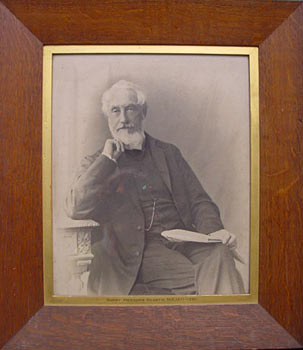 |
Wrington HISTORY Roman burial at Cadbury Hill, near Yatton by Rev Preb Harry Scarth |
 |
Wrington HISTORY Roman burial at Cadbury Hill, near Yatton by Rev Preb Harry Scarth |
 |
||||
| Rev Prebendary Henry (Harry) Mengden Scarth was rector of Wrington from 1871 for 19 years. In common with many country parsons of the time, he was a scholar. At least one of his interests was clearly archaeology, and, in particular, that of the Roman period. This article was published in the Proceedings of the Somersetshire Archaeological and Natural History Society, 1877, Part II, pp 8 - 11. |
||||
|
On an Interment found on Cadbury Hill, near Yatton, and BY THE REV. PREB. SCARTH, M.A., Rector of Wrington The summit of Cadbury Hill is encircled by a slight fortification, and the area has the traces of ancient dwellings. Rutter (Hist. of Som. p. 73) says, "The fortification is very rude and irregular, consisting in many places of little more than the steepness of the hill, assisted by a slight ditch, wrought out of the rocky soil. Toward the eastern side is an oblique entrance, and further on toward the south is another straight. The south side is precipitous and rocky, and near this side, toward the west, is a circular depression in the earth, having the appearance of a well, filled up." This is a very fair description of the camp. In the month of June or July 1877, an interment was found on the north side of the summit of the hill, which is the property of the Rev J. W. Hardman, L.L.D., of Cadbury House. Some labourers having been sent up to procure earth, came upon a skeleton, enclosed in a grave, or rudely-constructed cist, composed of rough stones of white lias. On visiting the spot next day, there was found in the loose soil a coin of Constantine the Great (bronze), but much corroded. The head of the emperor is, however, plain, and the legend, CONSTANTINVS IVN (?) NOB. CAES .(?) On the reverse are two Roman soldiers completely armed, and between them two military standards, the top of each of which appears to have the "Labarum". The coin is similar to those described by Mr. King in his Early Christian Numismatics, p. 22. The legend on the reverse is very difficult to read, but it seems to be GLORIA EXERCITVS, and the letters AQB or AQS in the exergue. The coin appears to have been struck after Constantine became a Christian, i.e. after A.D. 323. The discovery of this interment may lead to further researches. It is not the first discovery of Roman interments, which have been found at the base of the hill, at Yatton (see Som. Arch. and Nat. Hist. Soc. Proc., 1851, vol. i, part ii, p. 59). A large urn holding nearly two gallons of Roman coins was found in a Roman cemetery at Yatton, at the foot of the encampment known as Cadbury Hill, and then the garden of the Rev Richard Symes. On the hill to the east of Cadbury, above the present residence of Capt. William Long, Roman remains have also been found, consisting of much pottery and bronze implements, and the foundations of a dwelling; a boundary of loose stones has been traced in the wood, enclosing an area of several acres. Further up the Vale of Wrington, and following the same road to Redhill, about three miles, in the deep hollow and a quarter of a mile beyond the church is Lye Hole, where there is a stream of water, which runs into the Yeo River not far from Havyatt Green. About two fields from the farm house of Mr. Body, at this spot, and ascending up the hill to the south, there was found last summer the site of a Roman villa. Owing to the dryness of the month of July, 1876, the whole plan of the villa became evident in the turf, and led to the ground being opened, when the remains of a hypocaust were found. Many of the pilae were exposed, and were found to be constructed of roofing tiles from a still older building. The floor of the room laid open had however been destroyed, and nothing was found but remains of burnt matter, pottery of different kinds, and many roofing tiles. As it was evident that at some remote time the floors of the rooms had entirely perished, and nothing of importance was likely to be discovered, further examination was abandoned. In the early part of this century the present turnpike-road between Bristol and Bridgwater, which passes through the parish of Wrington, was constructed. The direction Thus the Vale of W rington gives everywhere indications of Roman occupation, and that occupation probably extends from the days of Claudius Caesar,1 by whom the mines of lead in Mendip appear to have been put under tribute, as a pig of Roman lead of the date of Claudius was found at Wookey, and another, bearing the stamp of Britannicus, the adopted son of Claudius, has been found at Blagdon, and others bearing the stamp of Vespasian have lately been found at Charterhouse-on-Mendip, where Roman coins of an early period have also been found - as for instance consular coins of the date of M. Antonius the Triumvir. There is little doubt that, if care be taken to note the evidences of Roman occupation in the Mendip district, much may be found of real historical interest.
TI . CLAVD .CAES. AVG P .M .TR .P .VIII .IMP. XVI. DE BRITAN . See also Musgrave, Bel. Brit., vol. i, p. 181 (pub.1719, Exeter and London), who thus describes it :- "Tropaeum ex oblonga plumbi tabula, in qua inscriptio haecce legebatur, prope Ogonen, uti refert Doctiss. Lelandus, circa initium seculi supra decimum quinti, aratro erutum est, et aedes Thos. Houardi Norf. Ducis, Londinium, eodem referentem translatum. " |
||||